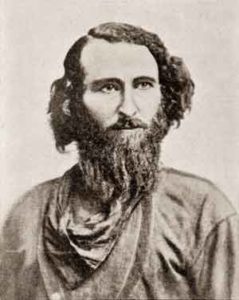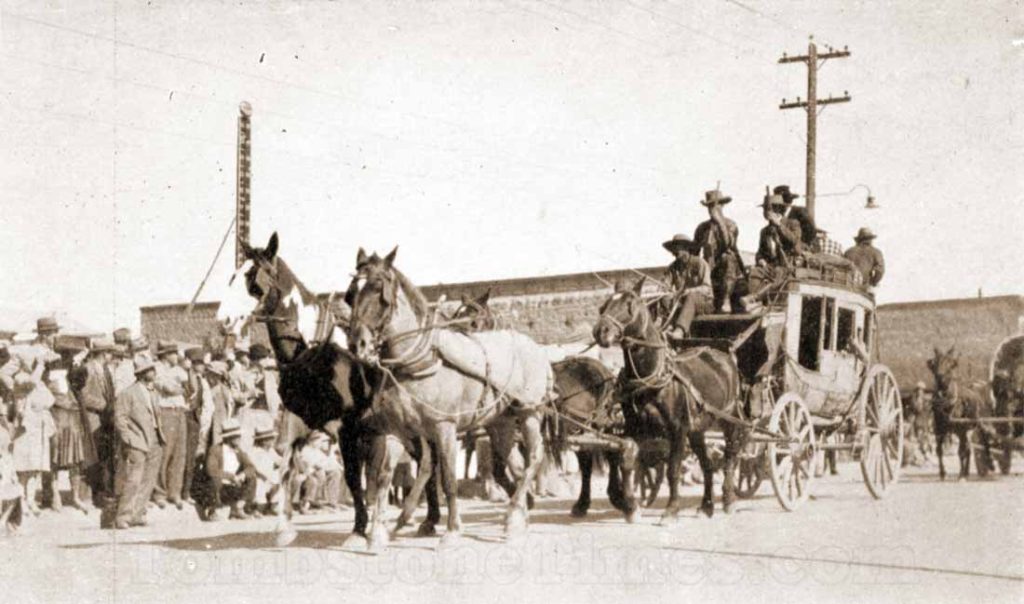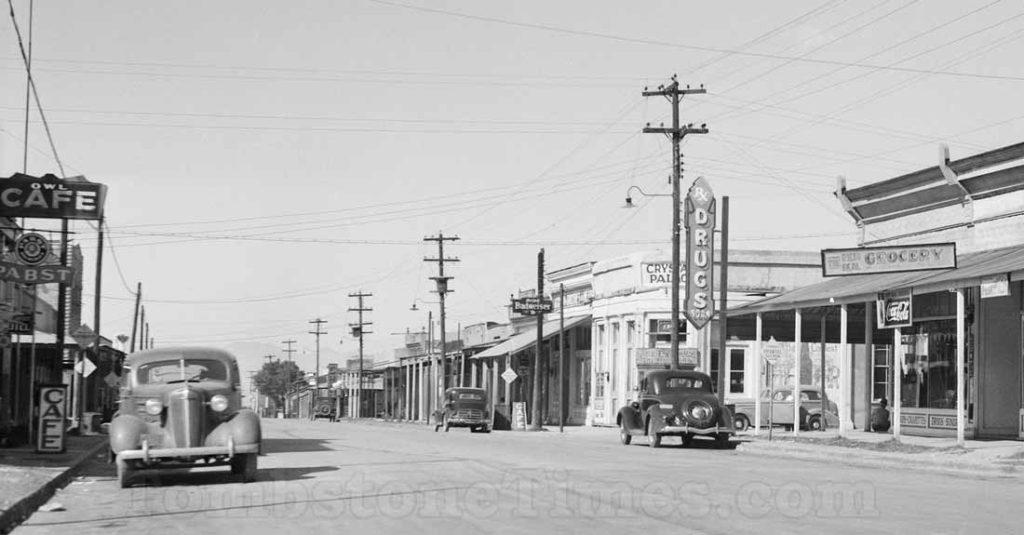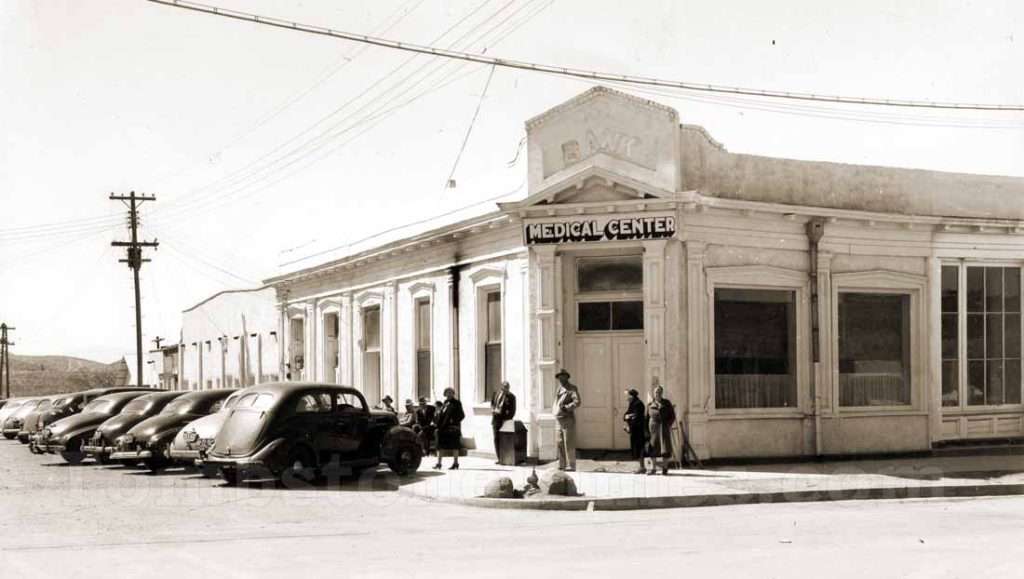
TOMBSTONE ARIZONA'S HISTORY & INFORMATION JOURNAL
TOMBSTONE ARIZONA'S HISTORY & INFORMATION JOURNAL
Tombstone: Too Tough to Die
by Janice
From the November 2003 issue of Tombstone Times
Tombstone: Too Tough to Die
by Janice
From the November 2003 issue of Tombstone Times
What is in a name? If you hear the name Chicago you may think of "The Windy City", say San Francisco and "City By the Bay" is thought of, New York brings to mind "The Big Apple". Well, say the name Tombstone and one thinks of many things. It creates images of gunfights and dusty streets, whiskey and faro games, Wyatt and Doc, and a plethora of old western movie scenes. But to some, saying the name Tombstone brings their thoughts to the place they call home. And mixed in their minds are memories of a hometown as well as a place that has drawn visitors from all over the world.
Tombstone Arizona has been titled "The Town Too Tough To Die" and for good reason as many things have worked against this town still standing. A town was formed around the area known as Goose Flats shortly after prospector and scout Ed Schieffelin discovered a wealth of silver in this area around 1877. He had been warned of only finding his 'tombstone' while searching for his treasure and thinking this an appropriate name for this new town site the location soon become known as Tombstone, Arizona Territory. Well that word can bring to mind thoughts of death perhaps thinking of the marker set upon a grave-site. Would the name be a premonition of sorts as many similar towns that sprung up over a mine claim had and would die
The late 1880's and up to the turn of the century found the silver mining industry failing as efforts to remove the seeping water that found its way into each mine-shaft failed. Miners were disgruntled and soon found new employment in the copper mines of Bisbee and other new mining towns. Families were moving away and the town was soon becoming its predetermined status, a ghost town. In 1929 a vote brought about yet another major change for this town. Bisbee was now to be the new county seat. All official offices were to be relocated some 25 miles away creating still another link to the town's preordained eventual death. Was not the name Tombstone becoming more and more appropriate for a dead town?
And yet, many residents continued to stay on here. Homes were still occupied and residents still met at the town hall for the political banter. Flour and coffee as well as other dry goods would have been purchased from the local market perhaps located on Allen Street. The ladies auxiliaries would have met and box lunch socials would have been prepared and anticipated. The town did not die.
And 1929 also brought about a new term in Tombstone's history. That word is Helldorado. It brought about a time when people came together to bring life to a dying town. An event would be planned that would bring folks to this small spot on the map. A spot where Wyatt Earp and Doc Holliday are synonymous with legends and lore. People began coming to Tombstone to relive the past and walk where Wyatt and Doc had walked. They began begging for more of this history to be known and books were soon written about this town with a name meant for death. Soon, with the advent of motion pictures, movies were made with heroes and heroines depicting the Wild West life of Tombstone Arizona Territory. More and more people wanted to visit this legendary town. The town was tough. It had not died.
A highway was built to this small town. Highway 80 left the 86 at Benson and came through the rugged and wash ridden land toward Tombstone. Soon a paved road brought the many visitors to this part of Arizona. A Greyhound Bus Station would inevitably be required as this town was a stop along the route traveled by many on their way to their destinations like Los Angeles or El Paso. The corner of 5th and Allen would be that bus stop. The Crystal Palace offered a refreshing stop for those departing the bus, even if just for a short stop over. What a thrill when one could say, "I've been to Tombstone and have had a drink at the world famous Crystal Palace."
Services were needed to carry on a life in Tombstone that could sustain its growing population. Movie theaters, soda fountains, drug stores, dry cleaners, lumber and hardware stores and markets were what occupied the buildings on Allen Street. Tombstone Union High School had been built where once cribs of prostitution occupied the east end of Allen Street. Students from all around Cochise County were educated here and prepared for perhaps college life in the big city of Tempe, Arizona.
The Army Base, Fort Huachuca was nearby and often brought not only the men on leave to our town for some livelihood and refreshment but also brought many a family to live in our town. Housing was sparse near the Fort and being the closest town with amenities, Tombstone became home to many military families. The town was still needed. The town was still tough.
Arizona was rapidly becoming known as the destination for the asthmatic and severely allergic population. The dry and arid climate along with the lack of the offending vegetation brought many easterners to our state. Tombstone would shortly become known as the town for Health, History and Hospitality.
Homes and apartments were being built to accommodate the influx of military families as well as those seeking better health. Clinics were formed in various buildings and homes, each with a cure for the arthritic or asthmatic. Motels sprung up along the highway to accommodate the travelers, tourists and part-time or winter residents. And the ever-present "filling stations" were dotted along Allen Street that was then the highway. One could even purchase an automobile at that time in Tombstone. And the corner of 4th and Allen housed the County Hospital where many a baby was born.
Life was good in Tombstone. Saturday afternoons could be spent at the Crystal Theater watching a double feature. Grocery shopping, dropping off one's dry cleaning, picking up the pharmacy needs, or perhaps seeking refreshment at the soda fountain would have occupied one's days then. This was no ghost town. In fact, it was home to many, many families who were living in "The Town Too Tough To Die".
I did not live in Tombstone then. But I do know that today the highway has by-passed Allen Street. We do not have a hospital in town. There is no longer the Crystal Theater or the corner drug store with a soda fountain. The Greyhound Bus does not come through Tombstone or even travels Highway 80 any longer. The filling stations have been replaced with eateries or banking buildings and the used car lots now offer parking for the many visitors to our town. The buildings where markets, sundries and supply stores and even dry cleaners once occupied and gave life to this little town have been replaced with a wealth of shops that help create the Tombstone we know today.
The town of Tombstone is still here. Even though it no longer is the epicenter of Cochise County, it is still home to many wonderful families that love this little spot on the map of Arizona. It continues to draw old west fantasy seekers from all over the world. Books and movies are still being written and produced about this town and its historic inhabitants. And many, many families look forward to their vacations where historic buildings still stand as monuments to the fact that this town that has a name synonymous with death has outlived its destiny and will forever be the town too tough to die.




